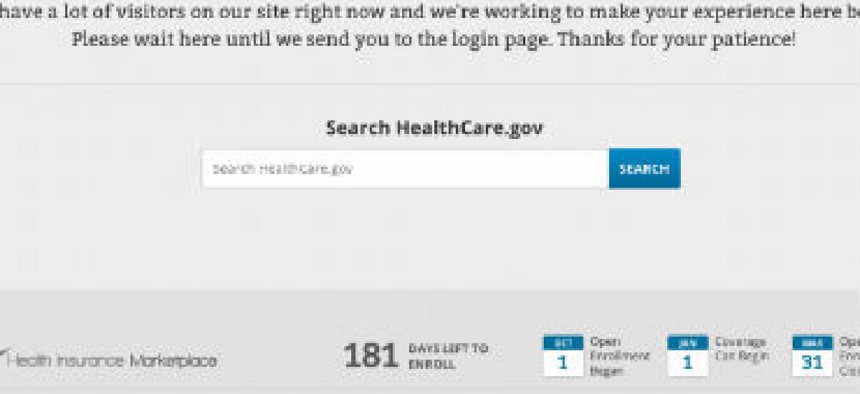Zients promises big improvements by Thanksgiving

"Let me be clear: Healthcare.gov is fixable," administration's point man for the fixes declares.

"Let me be clear: Healthcare.gov is fixable," administration's point man for the fixes declares.
Jeffrey Zients, the Obama administration insider tapped as the fixer for the troubled HealthCare.gov, said most of the problems plaguing the online service will be ironed out by the end of next month.
"It will take a lot of work. A lot of problems need to be addressed. But let me be clear: Healthcare.gov is fixable," said Zients, a management consultant and former acting director of the Office of Management and Budget, on a conference call with reporters Oct. 25. "By the end of November, HealthCare.gov will work smoothly for the vast majority of users."
Quality Software Services Inc. has been tapped to act as general contractor for the overall project, a role previously played by the Centers for Medicare and Medicaid Services. QSSI was responsible for building the data hub that connects information from a variety of government agencies to determine applicants' eligibility for insurance under the 2010 health care law. The company also built a component of the HealthCare.gov's identity management tool.
A review of the site, dubbed a "tech surge" by the administration, uncovered dozens of issues, which Zients described as performance problems that affected site speed and response time, and software bugs that prevented the system from working as designed. The team behind the surge created a "punch list" of fixes that QSSI is charged with implementing.
At the top of the list is fixing the problems on the back end of the system that affect delivery of enrollment forms to insurance carriers. Reports vary on the extent of the problems. At a House Energy and Commerce Committee hearing Oct. 24, Cheryl Campbell, senior vice president of HealthCare.gov contractor CGI Federal, said the problems were isolated. Industry sources, however, have told reporters that the problems are pervasive.
CMS will modify QSSI's contract to include its new role as general contractor. So far, QSSI has received $85 million for its work on the data hub, which largely performed as desired, and for other pieces of HealthCare.gov, including an identity management tool that was not built to accommodate the volume of registrations the site received as soon as it was launched.
Some of that high registration volume is attributed to a decision made two weeks before the open-enrollment date of Oct. 1 to require completed registrations before users could compare plans' costs and benefits. The administration has yet to disclose who made that decision and why -- and it has become a sticking point among critics of the law, who suspect it was done to hide pricing information from prospective customers.
Some improvements have already been implemented, Zients said, mostly relating to site performance. About 90 percent of users can create accounts, although the process of determining eligibility for a subsidy remains "volatile," he added, with only about one-third of applicants getting through to the end of the process. There is still no word on how many completed applications have resulted in purchased insurance policies. Officials have promised to release that information in early November.
So far, the federally facilitated exchanges run by HealthCare.gov have processed about half of the 700,000 applications for coverage. The rest were processed in the health insurance marketplaces operated by 14 states and the District of Columbia.
NEXT STORY: Zients to lead HealthCare.gov reboot






